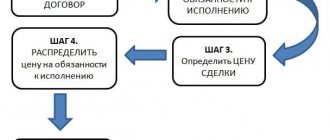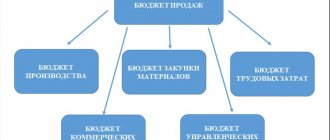The activity of distributing gift certificates, which guarantee the receipt of income to the seller in the amount indicated in them, is in demand when organizations conduct trade operations. They are used when providing services, selling goods, or can be transferred free of charge as a bonus to a major purchase.
Question: How to record the purchase of gift certificates and the transfer of them to employees as holiday gifts? Certificates were purchased in the amount of 150 pieces. The cost of one gift certificate corresponds to its face value and is equal to 1,500 rubles. (VAT is not presented). The transfer of certificates to employees is documented in an acceptance certificate. Employees did not receive any other gifts in the current calendar year. The issuance of gifts is not provided for in labor and collective agreements. View answer
A certificate is often offered in the form of a paper document or a plastic card with a certain denomination and number, which can later be exchanged for a product or service being sold.
The essence and features of transactions with a gift certificate
The offer announced by the company to sell gift certificates is recognized as a public offer, and its purchase by the consumer implies the latter’s acceptance of the offer (acceptance) and all the parameters specified in it (Articles 432, 433, 435, 437, 438 of the Civil Code of the Russian Federation).
What is the taxation procedure for selling your own gift certificate and subsequent exchange for goods (services)?
The rules for using a bonus document are often specified in the document itself, and it is not possible to exchange it for money. At the end of its validity period, the amount intended for use is redeemed, that is, it remains with the seller and is not returned to the purchaser of the card. Also, a lost or damaged document cannot be restored.
What is the accounting procedure for the sale of your own gift certificate and subsequent exchange for a product (service)?
A gift obligation is a variant of a preliminary agreement, according to which, within a certain period, the seller is obliged to draw up a purchase and sale agreement with the bearer of the document for the amount indicated in the form. The money paid for it acts as an advance payment for goods purchased in a future period.
For your information! Only the transaction amount is recorded on the card, and the name of the product and its price at the time of purchasing the certificate are not determined.
Production of gift certificates
The next step of the “gift certificate” promotion, which already directly affects the accounting department, is organizing the production of the certificates themselves. Typically, this work is entrusted to third-party companies on the basis of a contract. Accordingly, the organization will be able to take into account the costs of such production when taxing profits on the basis of subparagraph 49 of paragraph 1 of Article 264 of the Tax Code of the Russian Federation, as other expenses associated with sales. Documents confirming the validity of these expenses will be an agreement with the manufacturer, acts of acceptance of manufactured certificates, as well as an order from the manager, which we described in detail in the previous part of this article.
Quite often, accountants have a question: does the tax inspector recognize these expenses as advertising? In our opinion, if the manager’s order is drawn up in such a way that it clearly implies the non-advertising nature of gift certificates, there will be no claims from the tax authorities. To do this, the order must clearly and unambiguously indicate that the certificates are sold and not given free of charge to attract attention to a particular product or organization as a whole; that they confirm the bearer’s right to purchase a specific product, or goods for a certain amount, etc. Simply put, it should clearly follow from the order that the relationship between the organization and the certificate holder is exclusively commodity-monetary in nature.
Tax accounting of the certificate
The purchase of a certificate is an advance payment for a service planned to be received in the future (upon presentation of a card), and the actual sale of a product/service is the exchange of documentary evidence of the prepayment made for the service or product. Therefore, when selling, the taxpayer organization does not have an object subject to mandatory payment of profit (Article 251 of the Tax Code of the Russian Federation). Income received as an advance payment for future goods is not taken into account when calculating the profit tax base.
Therefore, the amount of payment for gift obligations received by the distributor from a potential buyer on account of future services is taken into account when calculating the tax on profit in proceeds from sales at the time of the actual provision of the service (letter of the Ministry of Finance of the Russian Federation No. 03-03-06/1/268 dated April 25, 2011 , Article 248, 274 of the Tax Code of the Russian Federation).
If the buyer does not present (do not use) the certificate within a certain period, then the amount of the advance payment transferred to the seller for profit taxation is taken into account as property received free of charge or non-operating income (Article 250 of the Tax Code of the Russian Federation).
When calculating the amount of the obligatory value added payment (VAT), the sale of goods within the territory of the country is taken into account as an object for taxation (Article 146 of the Tax Code of the Russian Federation). Therefore, for VAT, the amount for determining the tax is calculated:
- On the day of realization of gift obligations, since advance payment for future services is made before the provision of these services (Article 167 of the Tax Code of the Russian Federation). The basis for calculating tax if there is a payment for future services is formed from revenues including tax - at the rate of 18/118 (Article 154 of the Tax Code of the Russian Federation).
- The next time the VAT base is determined during the direct provision of the service (exchange of the bonus document). The previously calculated VAT is deductible if the cost of the services provided is not less than the amount paid for the obligation (Articles 154, 171 of the Tax Code of the Russian Federation). When the cost of the service provided is less than the amount of the advance payment or the certificate has not been used, the previously accrued VAT is not accepted for deduction on the difference.
When identifying an object for calculating tax using the simplified method of taxation (USNO), enterprises take into account proceeds from sales (Article 346 of the Tax Code of the Russian Federation). In this case, the date of receipt will be the day of receipt of money, the day of receipt of other property or rights to it.
When purchasing a gift certificate, first of all, money is received, and after some time, the service is provided. Therefore, the object for calculating tax under the simplified tax system is the amount of payment for the obligation received by the seller on the day of its sale.
For taxpayers who use the amount of income received minus the amount of expenses as the object of taxation, proceeds from sold gift certificates are taken into account in the same way. They also have the right to reduce the indicated income by the amount of expenses incurred. The expenses of the enterprise include expenses after the actual payment, which includes the end of the buyer’s obligation to the seller regarding the transfer of a product or rights to property (Article 346 of the Tax Code of the Russian Federation).
For your information! All expenses incurred must have reasonable confirmation in the form of documents (Articles 346, 252 of the Tax Code of the Russian Federation).
Accounting for gift certificates from the seller
Although from the point of view of civil law relations, payment for a certificate is an acceptance of the conditions proposed by the seller, for the purposes of accounting and tax accounting of gift certificates, their sale should be considered as an advance from the buyer. This opinion was expressed by the Supreme Court in its ruling dated December 25, 2014 in case No. 305-KG14-1498. Financiers adhere to a similar position (letters from the Ministry of Finance dated 04/25/2011 No. 03-03-06/1/268, dated 02/08/2019 No. 03-03-06/3/7605).
In this regard, when organizing the accounting of gift certificates, it is advisable to proceed from this point of view.
For the seller, accounting for gift certificates will include several stages:
- Certificate production. In this case, the forms can be produced by a third party or in-house.
- Selling a certificate.
- Sale of goods (works, services) in exchange for a certificate and redemption of unused certificates.
Let us examine in detail the accounting procedure at each stage.
Costs for producing gift certificates
Expenses for issuing gift cards are aimed at generating income and are recognized as expenses for ordinary activities (clause 5 of PBU 10/99). Such expenses are reflected in account 44 “Sales expenses” in the period of occurrence. If contractors are involved, account 44 corresponds with account 60 or 76. When producing on one’s own, with cost accounts that collect expenses incurred for issuing certificates (materials, wages). At the end of the month, account 44 is closed to account 90 in the usual manner.
To control the movement of finished cards, off-balance sheet account 006 “Strict reporting forms” is used. The valuation is determined by the accounting policy of the enterprise and can be conditional, for example 1 ruble, or correspond to the real costs of production.
See how the acceptance of gift certificates for accounting is reflected in postings:
The same approach is used when calculating income tax: manufacturing costs are indirect costs that reduce the tax base (clause 1 of Article 252, subclause 49, clause 1 of Article 264 of the Tax Code of the Russian Federation). Firms using the simplified tax system (with the object “income minus expenses”) can take into account the costs incurred after they have been paid as part of material expenses (subclause 5, clause 1, article 346.16, subclause 1, clause 2, article 346.17 of the Tax Code of the Russian Federation).
The right to deduct input VAT arises at the moment card issuance services are accepted for accounting.
1C does not provide special functionality for accounting for the costs of issuing cards. Services of third-party organizations are registered with the document “Receipts (acts, invoices)”:
Costs for own production are formed through payroll, invoice requirements, etc.
The posting of forms to an off-balance sheet account is carried out manually:
Selling gift certificates: accounting and taxes
As mentioned above, the sale of gift certificates in accounting should be qualified as receipt of an advance payment and reflected on the credit of account 62. At the same time, the forms are written off from the off-balance sheet account. Since advances received are not taken into account when calculating taxable profit (subclause 1, clause 1, article 251 Tax Code of the Russian Federation), money received for cards does not increase profits. But these amounts are included in the VAT tax base. VAT is calculated at the rate of 20/120.
Enterprises using the cash method, including payers on the simplified tax system, must take into account the payment received for gift cards as part of their income (clause 1 of article 346.17 of the Tax Code of the Russian Federation).
Let's look at how gift certificates are accounted for in 1C Accounting 8.3 at the stage of their sale.
If you keep records of gift certificates in UT 10.3 or 11 with subsequent uploading of data to 1C: Accounting, the procedure may be different; it is not discussed in this article. To set up gift card accounting in 1C: Trade Management, use the video at the beginning of the article.
Selling gift certificates in 1C
First of all, you need to make the necessary program settings:
In the “Trade” section we find the “Retail” subsection and “Gift Certificates”
Now you can start recording certificate sales. To do this, use the “Retail Sales Report” from the “Sales” section:
In the report, go to the “Certificate Sales” tab and click “Add”:
We create a new type of payment. We use an impersonal retail buyer as a counterparty, tying a virtual “Retail Sales” agreement to him:
We insert the created certificate into the tabular part of the report and indicate the total amount of sales. In our example, 5 cards with a nominal value of 5,000 rubles were sold. in the amount of 25,000 rubles.
We carry out the document. The program generated the necessary wiring:
At the same time, you need to make a manual operation to write off 006 sold certificates from account.
Subscribe to the
Yandex.Zen VKontakte Telegram
VAT payers, based on the generated retail sales report, generate an advance invoice:
Payment for goods with gift certificates
At the time of sale of goods in exchange for a gift card, it is necessary to reflect the revenue, charge VAT on sales, write off the cost of goods as expenses, offset the prepayment and submit for deduction the previously paid VAT on advances.
At this step of accounting for gift certificates in retail trade, the postings will be as follows:
Tax accounting in companies on OSNO is identical to accounting: income includes the proceeds received in the amount of the sale price of the product (excluding VAT), and expenses include its cost.
The tax base in organizations using the simplified tax system is formed differently:
When organizing the accounting of gift certificates in 1C 8.3, you will have to use the “Retail Sales Report” document again. On the “Products” tab, enter information about the product sold:
Fill in the “Non-cash payments” tab with the information about the presented gift certificate:
In our example, the buyer bought a printer for 9,000 rubles, 5,000 rubles. paid with a certificate, the remaining 4,000 rubles. paid extra in cash. "1C" generated all the necessary postings:
If the denomination of the certificate exceeds the purchase price, then the purchase price is entered in the “Amount” column on the “Non-cash payments” tab:
In our example, certificates were used to pay for goods worth 9,000 rubles. (5,000 rubles for a printer and 4,000 rubles for a mixer), including VAT - 1,500 rubles. VAT is accepted for deduction:
Redemption of unused gift certificates: accounting
Typically, the terms of sale of gift cards provide that if the purchase price is less than the face value of the certificate or it is not purchased within the validity period, the unused amount will not be returned to the buyer. In such a situation, the “burnt” amount is recognized as the seller’s income and is reflected in account 91.
Art. 171, 172 of the Tax Code of the Russian Federation do not allow VAT to be deducted from written-off advance payments, since in this case there is no return of the advance payment to the buyer in connection with a change or termination of the contract, nor shipment of goods against the advance payment. Therefore, VAT relating to an unsold gift card is expensed at the time of redemption.
The write-off of debt on a “burnt” certificate is reflected by the following entries:
Redeeming Unused Gift Certificates: Taxes
Clause 18 Art. 250 of the Tax Code of the Russian Federation obliges income tax payers to include written off debt in non-operating income. For enterprises using the simplified tax system, the amount written off does not increase the tax base, since the cost of the certificate was fully included in income when it was sold.
It was already mentioned above that VAT on written off “burnt” certificates cannot be deducted. At the same time, according to the Ministry of Finance (letter dated December 7, 2012 No. 03-03-06/1/635), sub. 14 clause 1 art. 265 and paragraph 19 of Art. 270 of the Tax Code of the Russian Federation makes it impossible to reduce taxable profit by the amount of VAT on written-off advances.
That is, financiers believe that VAT paid on the sale of certificates can neither be returned from the budget nor taken into account as expenses when taxing profits.
But there are alternative points of view:
- The Ministry of Finance does not say anything about including in income the amount of VAT on written-off advances. At the same time sub. 2 p. 1 art. 248 of the Tax Code of the Russian Federation establishes that taxes presented to the buyer are not included in income. This allows us to conclude that when calculating income tax, VAT on written-off advances is not taken into account either in income or expenses.
- The courts have repeatedly confirmed the right of taxpayers to take into account VAT on written-off advances in expenses, if the tax was taken into account in income when writing off (resolution of the Central District Administrative Court dated March 19, 2015 No. F10-343/2015, resolution of the Far Eastern District Administrative Board dated March 4, 2015 No. F03-518/ 2015, etc.).
It is up to the organization to decide whether to adhere to the position of the Ministry of Finance or risk disputes with inspectors.
Redemption of unused gift certificates in 1C
In 1C, to write off a debt, the “Debt Adjustment” document is used:
In the appropriate fields we indicate that we want to write off the advance received; select a virtual retail buyer and click the “Fill in” button:
The program will automatically enter into the form all existing debt to the selected counterparty. In our case, we want to write off the value of the certificate (1,000 rubles) unused by the mixer buyer, so we correct the amount manually.
Fill out the “Write-off account” tab:
After posting the document, the following transactions will be generated in accounting:
VAT is written off using the document of the same name from the “VAT Regulatory Operations” section:
When you click the “Fill” button on the “Advances received” tab, the table will be filled in automatically:
Next, you need to fill out the “Write-off account” tab:
After posting the document, the program will generate the necessary transactions:
Accounting certificate
The procedure for recording bonus documents is divided into several stages:
- manufacturing;
- sale (realization);
- repayment (exchange) of a gift obligation for a product;
- redemption of certificates not provided for exchange.
In relation to gift forms, accounting provides for accounting for expenses associated with their production. Such costs related to the acquisition and sale of goods are classified as expenses for ordinary activities. The following entries must be made in accounting:
- expenses for creating documents: Debit 44 accounts. (Sales costs) / Credit 60 inc. (Settlements with suppliers/contractors);
- accounting for mandatory budget payment (input VAT) on the forms recorded in accounting: Debit 19 accounts. / Credit 60 credit;
- acceptance of tax for deduction (input VAT): Debit 68 accounts. (VAT calculations) / Credit 19 counts;
- posting of liabilities: Debit 006 account. (Strict reporting documents, sub-account “Gift Certificates”).
On the off-balance sheet account (006), forms are recorded by quantity, identification numbers or nominal value.
Expenses for the production of forms are classified as other expenses, they are subject to write-off as expenses of the current period (month), and can also be counted against the items of advertising expenses of the enterprise in the form of the cost of their purchase (no more than 1% of sales revenue).
When accepting gift forms for payment, sales tax is calculated and the amount of tax calculated from the prepayment is taken for deduction. Transaction transactions will be as follows:
- reflection of the received prepayment: Debit 50 account. (Cash) / Credit 62 accounts. (Settlements with customers, subaccount “Advances received”);
- accrual of tax (VAT) on received prepayment: Debit 62 accounts. / Credit 68 credits;
- writing off forms: Credit 006 account;
- reflection of receipts from the sale of a product: Debit 62 accounts. / Credit 90 credit (Sales, subaccount “Revenue”);
- write-off of goods/services sold: Debit 90 account. / Credit 41 credits (Goods);
- accrual of tax (VAT) on revenue: Debit 90 account. / Credit 68 credits;
- offset of prepayment: Debit 62 accounts. / Credit 62 credits;
- offset (reversal) of previously paid (prepaid) VAT: Debit 62 inc. / Credit 68 credit
For your information! VAT paid on an advance payment previously received is not refundable in a situation where the sold certificates are not used by buyers within the prescribed period.
Postings for unused gift obligations:
- reflection of the size of unused documents in the amount of receipts: Debit 62 accounts. / Credit 91 credit (Other income and expenses);
- attribution to expenses of VAT paid on prepayment: Debit 91 account. / Credit 62 credits (sub-account “Advances received”).
Certificates that are not sold within the period established for use are subject to destruction with the drawing up of an appropriate act and subsequent deregistration.
Using cash registers when selling certificates
Companies that make payments when providing services/selling a product using payment cards or cash are required to carry out all payments based on technical devices of a cash register type (CCP). In this case, copies of the cash register must be registered in the state register (Federal Law No. 54, 05/22/2003). When working with a cash register, at the time the buyer pays money, the seller must give him a cash receipt printed on the cash register.
A gift obligation is a specific advance payment (not a product), therefore, when selling it, an enterprise must use a cash register and run a check (at the time of sale). Similarly, a check at the cash register must be entered (in a separate section of the cash register) when paying for goods using a gift document (letter of the Ministry of Finance of the Russian Federation No. 03-03-06/1/268, 04/25/2011).
How a gift card works
Gift certificates are a document that gives its bearer the right to offset against the cost of goods (works, services) purchased from the seller the amount of the denomination specified in this certificate.








